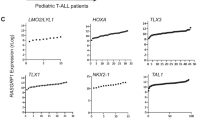Abstract
In this study, the efficacy of an anti-ras ribozyme in reversing a transformed phenotype was investigated. A murine NIH/3T3-derived cell line, designated 2–12, contains an inducible Ha-ras oncogene, which is regulated by theEscherichia coli (E. coli) lac operator/repressor system, and displays a transformed phenotype after isopropyl-β-d-thiogalactoside induction. To reverse the transformed characteristics, the ribozyme, which specifically targets the Ha-ras oncogene at the codon 12 mutation site (GGC to GUC), was transfected into 2–12 cells. Two (ribZ4 and ribZ7) clones were subsequently selected and analyzed for their transforming features. Our results show that, in the transfectants, ribozyme gene expression was detected, and the target Ha-ras transgene was expressed at basal levels. Their phenotypic responses, including morphology, cell growth rate, colony-formation efficiency and tumorigenicity in mice with severe combined immunodeficiency were more similar to those of NIH/3T3 than 2–12 transformed cells. Directly injecting the ribozyme DNA into tumors induced by transformed 2–12 cells in BALB/c mice also caused tumor regression. The enzymatic cleavage products of the ribozyme acting on mutant Ha-ras mRNA in vivo were detected by primer-extension analysis. These results indicate that the ribozyme were designed exhibits a site-specific ribonuclease function that effectively abrogates Ha-ras-oncogene-induced transformation, and this unique anti-Ha-ras property should shed light on the development of strategies against the Ha-ras-oncogene-initiated malignancy.
Similar content being viewed by others
Abbreviations
- IPTG :
-
isopropyl β-d-thiogalactoside
References
Altman S (1993) RNA enzyme-directed gene therapy. Proc Natl Acad Sci USA 90:10898–10900
Barbacid M (1987) Ras genes. Annu Rev Biochem 56:779–827
Barinaga M (1993) Ribozymes: killing the messenger. Science 262: 1512–1514
Berners-Price SJ, Mirabelli CK, Johnson RK, Mattern MR, McCabe FL, Faucette LF, Chiu MS, Shau MM, Sadler PJ, Crooke ST (1986) In vivo antitumor activity and in vitro cytotoxic properties of bis[1,2-bis(diphenylphosphino)ethane] gold(I) chloride. Cancer Res 46:5486–5493
Bos JL (1989) Ras oncogenes in human cancer: a review. Cancer Res 49:4682–4689
Cantor GH, McElwain TF, Birkebak TA, Palmer GH (1993) Ribozyme cleaves rex/tax mRNA and inhibits bovine leukemia virus expression. Proc Natl Acad Sci USA 90:10932–10936
Cech TR (1988) Ribozymes and their medical implications. JAMA 260:3030–3034
Chatterjee S, Johnson PR, Wong KK (1992) Dual-target inhibition of HIV-1 in vitro by means of an adeno-associated virus antisense vector. Science 258:1485–1488
Feng M, Cabrera G, Deshane J, Scanlon KJ, Curiel DT (1995) Neoplastic reversion accomplished by high efficiency adenoviral-mediated delivery of an anti-ras ribozyme. Cancer Res 55: 2024–2028
Fort LM, Piechaczyk M, Sabrouty SE, Dani C, Jeanteur P, Blanchard JM (1985) Various rat adult tissues express only one major mRNA species from the glyceraldehyde-3-phosphatedehydrogenase multigenic family. Nucleic Acids Res 13:1433–1442
Funato T, Shitara T, Tone T, Jiao L, Kashani-Sabet M, Scanlon KJ (1994) Suppression of Ha-ras-mediated transformation in NIH3T3 cells by aras ribozyme. Biochem Pharmacol 48: 1471–1475
Ito M (1984) Microassay for studying anticellular effects of human interferons. J Interferon Res 4:603–608
Jones KA, Yamamoto KR, Tjian R (1985) Two distinct transcription factors bind to the HSV thymidine kinase promoter in vitro. Cell 42:559–572
Kashani-Sabet M, Funato T, Tone T, Jiao L, Wang W, Yoshida E, Kashfinn BI, Shitara T, Wu AM, Moreno JG, Traweek ST, Ahlering TE, Scanlon KJ (1992) Reversal of the malignant phenotype by an anti-ras ribozyme. Antisense Res Dev 2: 3–15
Kashani-Sabet M, Funato T, Florenes VA, Fodstad O, Scanlon KJ (1994) Suppression of the neoplastic phenotype in vivo by an anti-ras ribozyme. Cancer Res 54:900–902
Koizumi M, Kamiya H, Ohtsuka E (1992) Ribozymes designed to inhibit transformation of NIH3T3 cells by the activated c-Ha-ras gene. Gene 117:179–184
Koizumi M, Kamiya H, Ohtsuka E (1993) Inhibition of the c-Ha-ras by hammerhead ribozymes containing a stable C(UUCG)G hairpin loop. Biol Pharm Bull 16:879–883
Kyprianou N, Isaacs JT (1990) Relationship between metastatic ability and H-ras oncogene expression in rat mammary cancer cells transfected with the v-H-ras oncogene. Cancer Res 50: 1449–1454
Lieber A, Strauss M (1995) Selection of efficient cleavage sites in target RNAs by using a ribozyme expression library. Mol Cell Biol 15:540–551
Liu HS, Scrable H, Villaret DB, Lieberman MA, Strambrook PJ (1992) Control of Ha-ras-mediated mammalian cell transformation byEscherichia coli regulatory elements. Cancer Res 52:983–989
Lowy DR (1993) Function and regulation ofras. Annu Rev Biochem 62:851–891
Morgan RA, Anderson WF (1993) Human gene therapy. Annu Rev Biochem 62:191–217
Nabel GJ, Fox BA, Post L, Thompson CB, Woffendin C (1994) A molecular genetic intervention for AIDS: effects of a transdominant negative form of Rev. Hum Gene Ther 5:79–92
Poeschla E, Wong-Staal F (1994) Antiviral and anticancer ribozymes. Curr Opin Oncol 6:601–606
Prendergast GC, Gibbs JB (1994) Ras regulatory interactions: novel targets for anticancer intervention? Bioessays 16:187–191
Renneisen K, Leserman L, Mattes E, Schroder HC, Muller WE (1990) Inhibition of expression of human immunodeficiency virus-1 in vitro by antibody targeted liposomes containing antisense RNA to the env region. J Biol Chem 265: 16337–16342
Rossi JJ (1995) Controlled, targeted, intracellular expression of ribozymes: progress and problems. Trends Biotechnol 13:301–306
Scanlon KJ, Jiao L, Funato T, Wang W, Tone T, Rossi JJ, Kashani-Sabet M (1991) Ribozyme-mediated cleavage of c-fos mRNA reduces gene expression of DNA synthesis enzymes and metallothionein. Proc Natl Acad Sci USA 88:10591–10595
Shore SK, Nabissa PM, Reddy EP (1993) Ribozyme-mediated cleavage of the BCRABL oncogene transcript: in vitro cleavage of RNA and in vivo loss of p210 protein-kinase activity. Oncogene 8:3183–3188
Snyder DS, Wu Y, Wang JL, Rossi JJ, Swiderski P, Kaplan BE, Forman SJ (1993) Ribozyme mediated inhibition ofbcr-abl gene expression in a philadelphia chromosome-positive cell line. Blood 82:600–605
Sullenger BA, Cech TR (1993) Tethering ribozymes to a retroviral packaging signal for destruction of viral RNA. Science 262:1566–1569
Sun LQ, Wang L, Gerlach WL, Symonds G (1995) Target sequence-specific inhibition of HIV-1 replication by ribozymes directed to tat RNA. Nucleic Acids Res 23:2909–2913
Tabin CJ, Bradley SM, Bargmann CI, Weinberg RA, Papageorge AG, Scolnick EM, Dhar R, Lowy DR, Chang EH (1982) Mechanisms of activation of a human oncogene. Nature 300: 143–149
Von Weizsacker F, Blum HE, Wands JR (1992) Cleavage of hepatitis B virus RNA by three ribozymes transcribed from a single DNA template. Biochem Biophys Res Commun 189:743–748
Wright L, Wilson SB, Milliken S, Biggs J, Kearney P (1993) Ribozyme-mediated cleavage of thebcr-abl transcript expressed in chronic myeloid leukemia. Exp Hematol 21:1714–1718
Yamada O, Yu M, Yee JK, Kraus G, Looney D, Wong-Staal F (1994) Intracellular immunization of human T-cells with a hairpin ribozyme against human immunodeficiency virus type I. Gene Ther 1:38–45
Author information
Authors and Affiliations
Corresponding author
Rights and permissions
About this article
Cite this article
Chang, MY., Won, SJ. & Liu, HS. A ribozyme specifically suppresses transformation and tumorigenicity of Ha-ras-oncogene-transformed NIH/3T3 cell lines. J Cancer Res Clin Oncol 123, 91–99 (1997). https://doi.org/10.1007/BF01269886
Received:
Accepted:
Issue Date:
DOI: https://doi.org/10.1007/BF01269886




